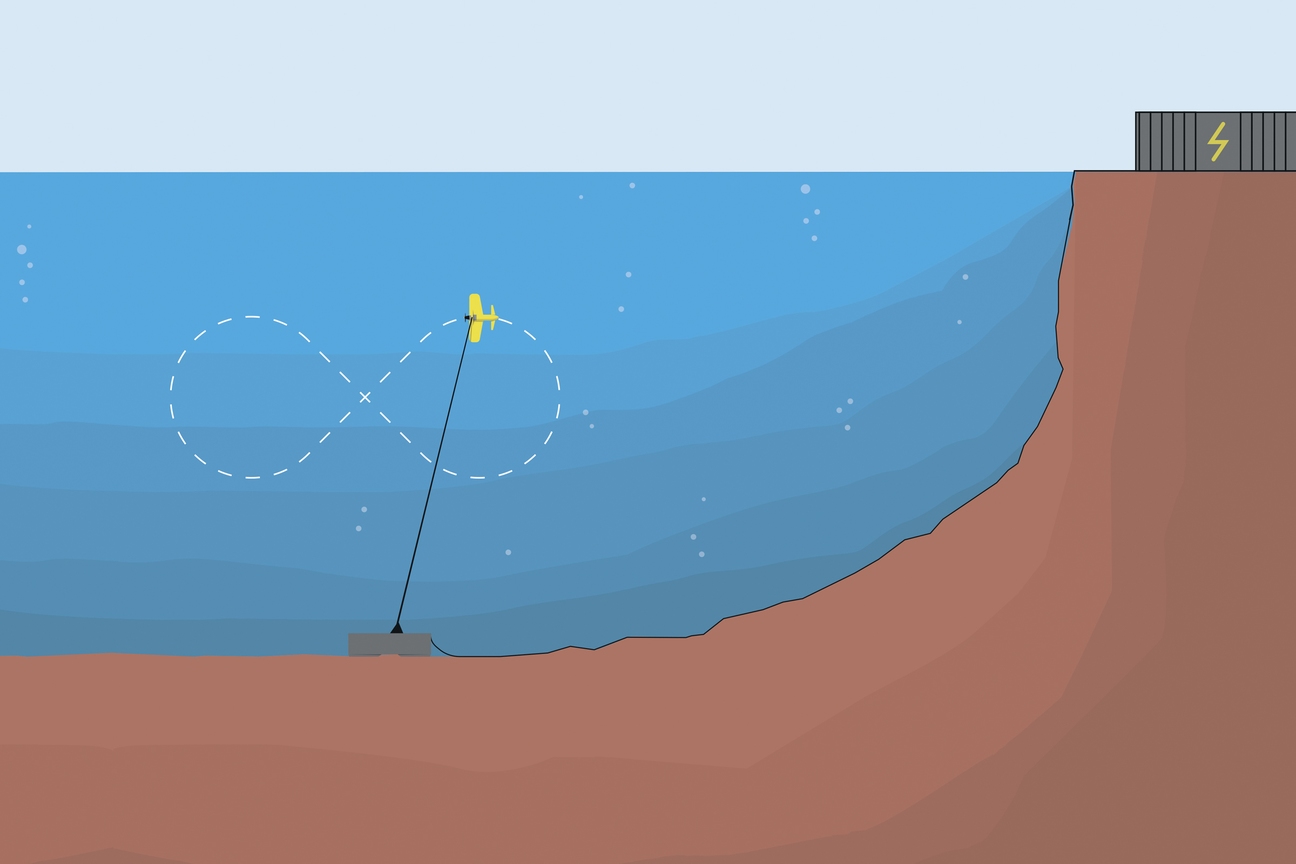
Deep Green – A new take on offshore energy
Since ancient times, hydropower has been core to supply societies with reliable electricity without the need for expensive and polluting fuels. But while the demand for more renewable energy keep increasing, conventional hydro has reached its limit for expansion. What then if the immense power of kinetic energy in moving water could be utilised in another, predictable and cost-effective way? Enter tidal energy and Minesto’s Deep Green technology.
Tidal power is the only renewable source derived from the moon. Caused by the gravitational influence of the sun and moon on the earth’s oceans, the tidal flows constantly move back and forth. But for the most part, they move slowly – too slow for conventional tidal technologies. Minesto has invented a way to speed up the flow.

Illustration of the latest design of Minesto’s subsea kite technology. In 2020, Minesto plans to install two 100kW Microgrid systems as a first phase of expansion of tidal energy in the Faroe Islands.
An abundant and predictable natural resource
“We fly with the tides,” says Dr Martin Edlund, CEO at Minesto. “The main advantage is that we can harvest energy from very slow currents. This resource is abundant – it is everywhere. And we can predict the power output, which is needed as complement to
mainstream renewables such as wind and solar where the output is dictated by variable conditions.”
Minesto’s marine energy-converting technology can be described as subsea kites. A wing carrying a small turbine is tethered to the seabed. It converts kinetic energy to electricity by way of a unique principle similar to flying a stunt kite in the wind. The Minesto kite uses the lift force of the stream flow to “fly” across the underwater current, pushing the turbine through the water at a speed several times the actual stream flow. Electricity is produced in the onboard generator and transmitted through the tether to seabed cables.
Rudders mounted at the nacelle enable the device to move in a predetermined figureof- eight trajectory. The tether is a unique feature and is specific to the Deep Green system, however it is made up by relatively standard components such as fibre mooring rope, electrical cables and polyurethane fairings. Each of these components are tailored to the application to match factors such as power rating, installation depth, forces and lifetime.

Minesto’s utility-scale marine energy converter DG500 during commissioning trials in North Wales. The DG500 has a rated power of 500kW and a wingspan of 12 meter.
Blend of unique and standard components
Some of the components are off-theshelf, such as sensors, cables, inverters and connectors, whilst the components including wing, turbine, nacelle body and rudders are designed specifically for the Deep Green system. Other components are adaptions of existing products to Minesto’s application, such as the actuators, generator and the bottom joint. “For concepts such as this, the more off-the-shelf components, the better when it comes to scaling up the technology”, says Martin Edlund. And scaling up and market penetration is at the top of the agenda for the company, he adds.
Renewable baseload powered by the moon
Our chief technology officer calls it the ‘irresistible engineering challenge’. We need to mature a novel technology in a subsea environment offshore, without losing sight of crucial customer values such as performance, robustness and efficient operation and maintenance. And we are making good progress. In the last few years, we have verified the technology at a commercial scale, and we are collaborating with electric utility actors in the Faroe Islands and France to show the energy industry what this technology can offer –renewable baseload powered by the moon.